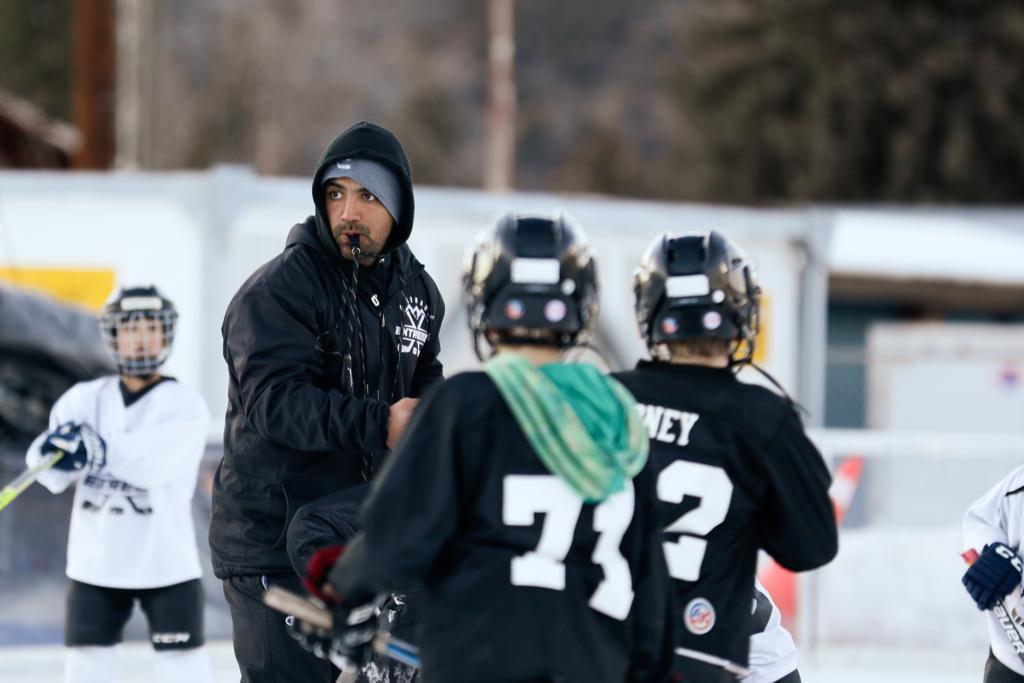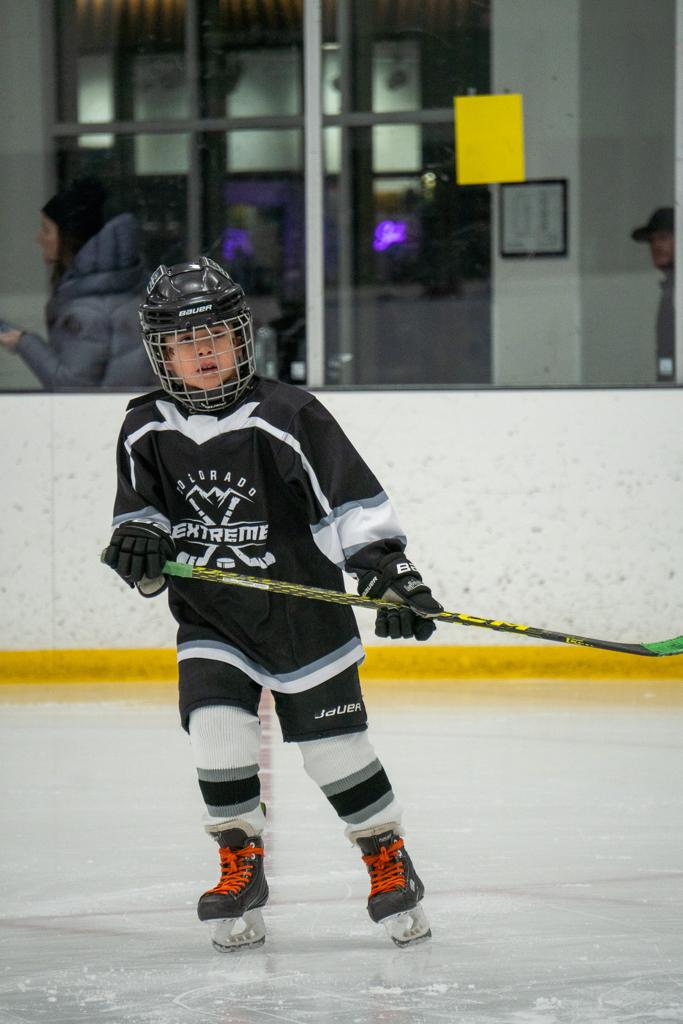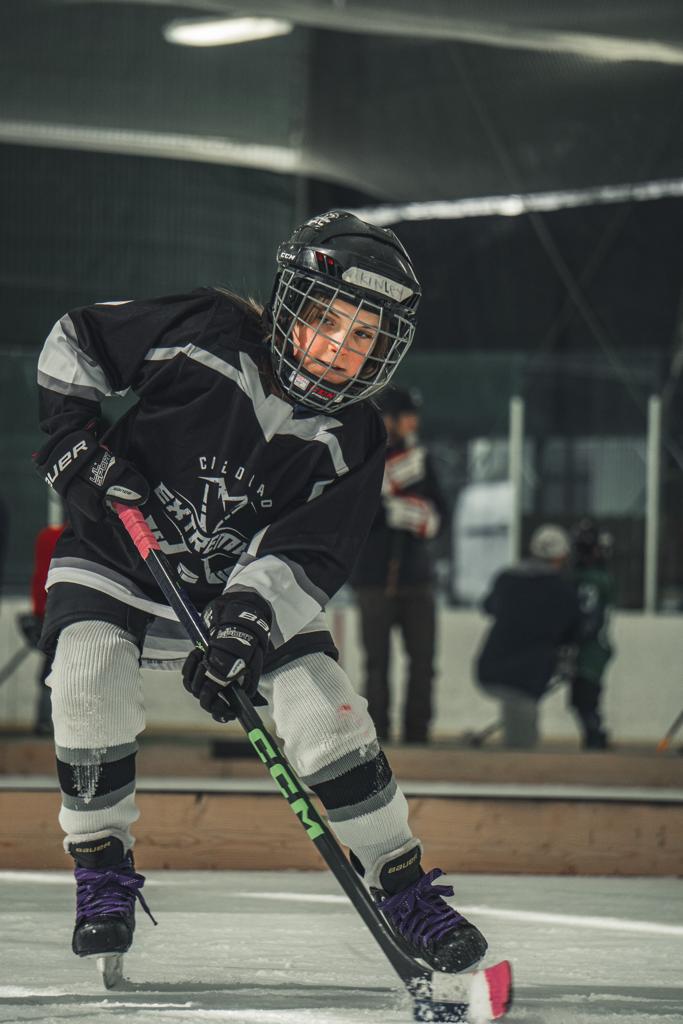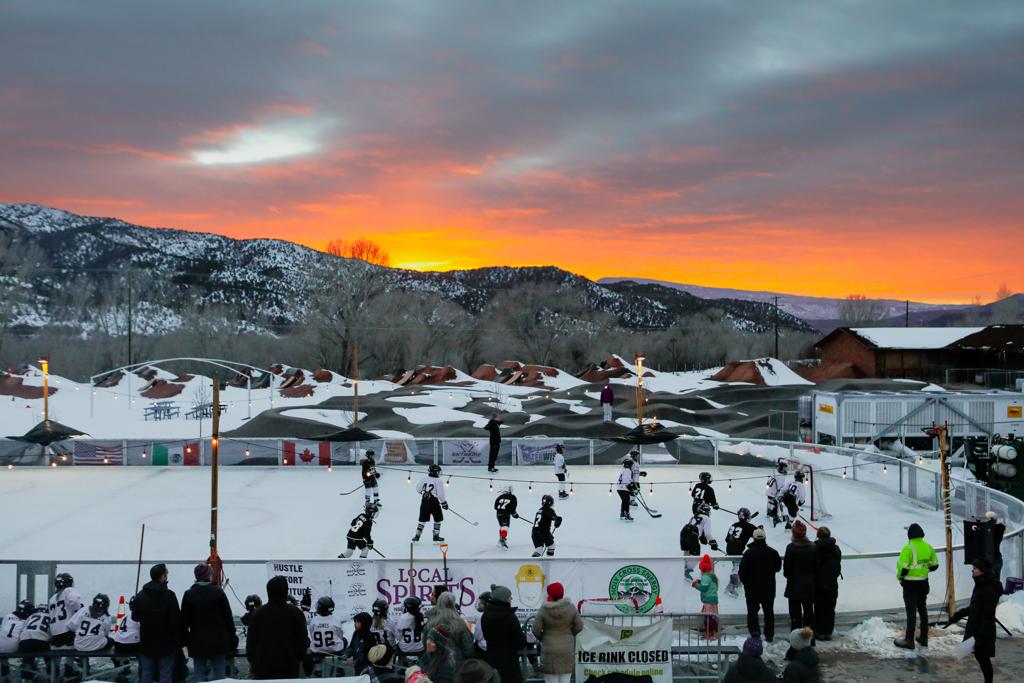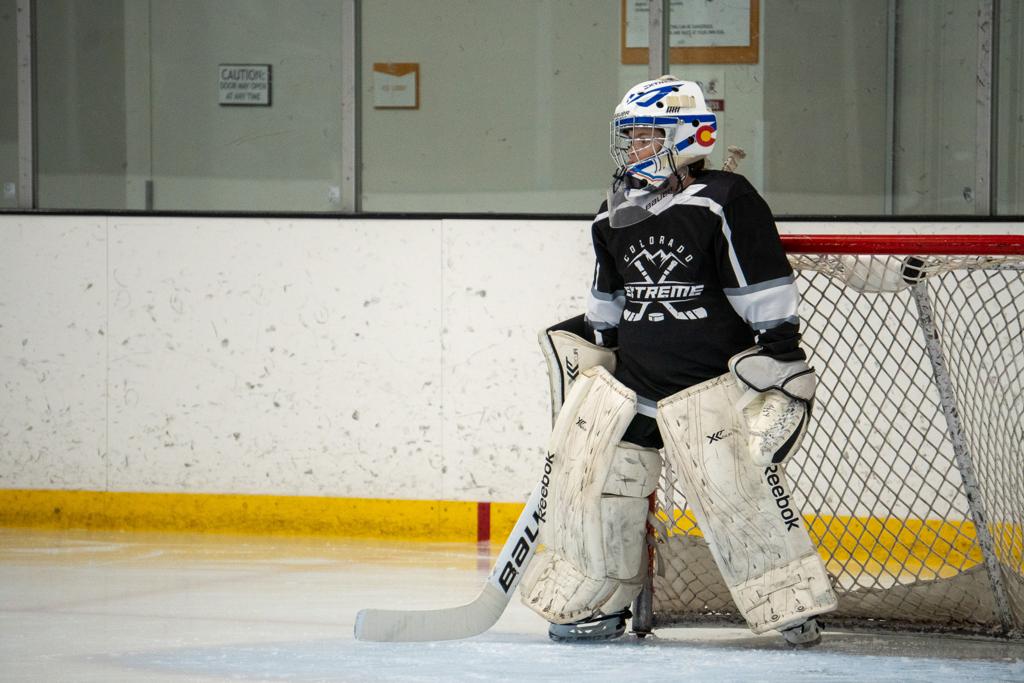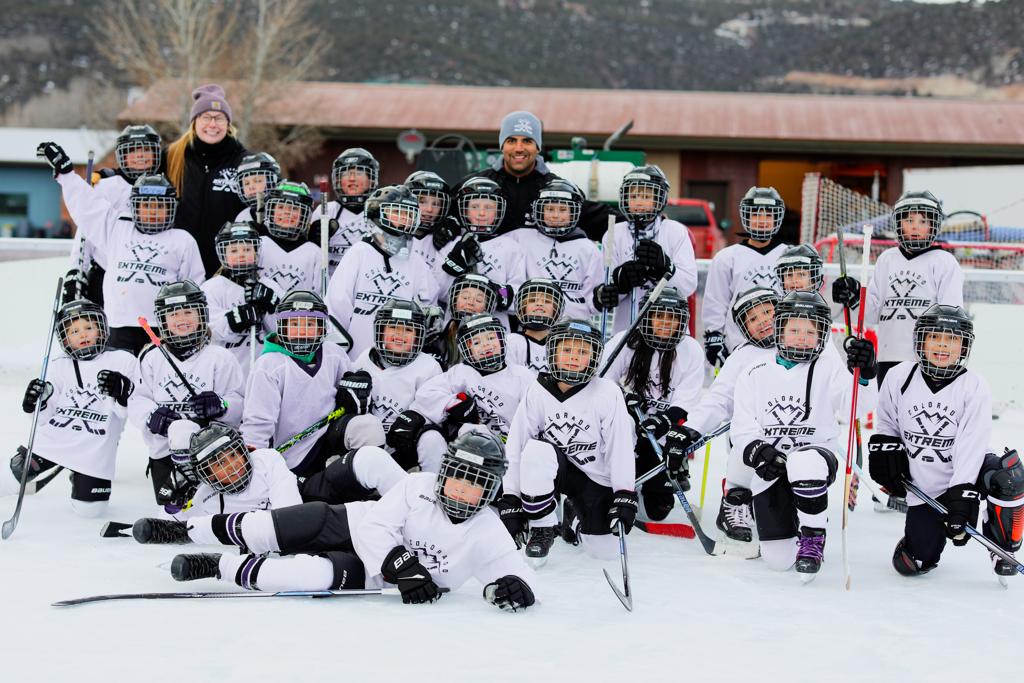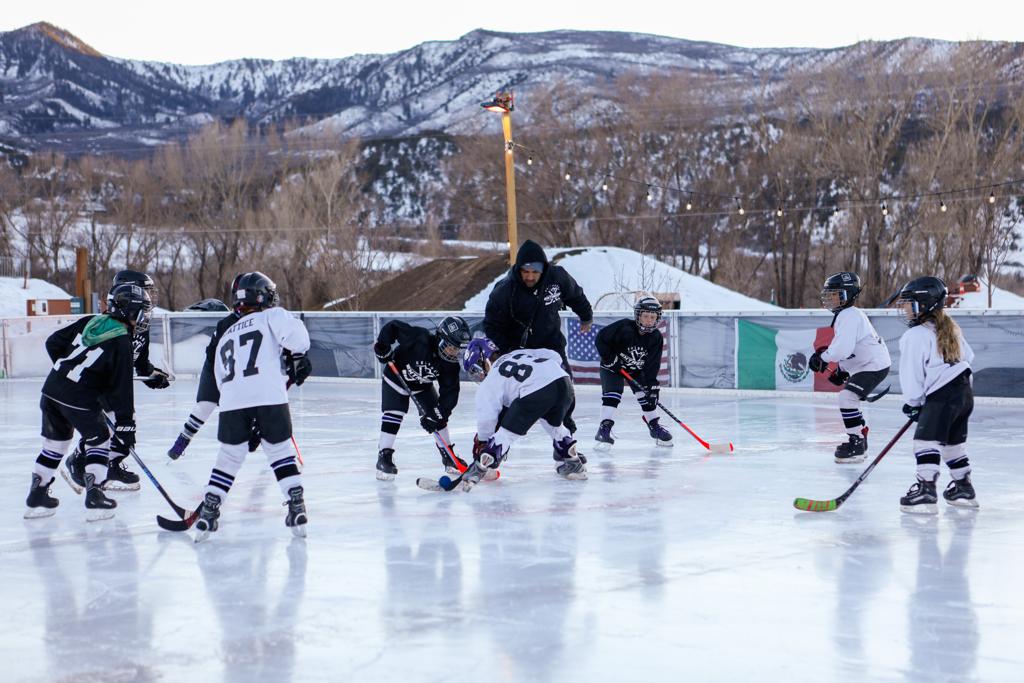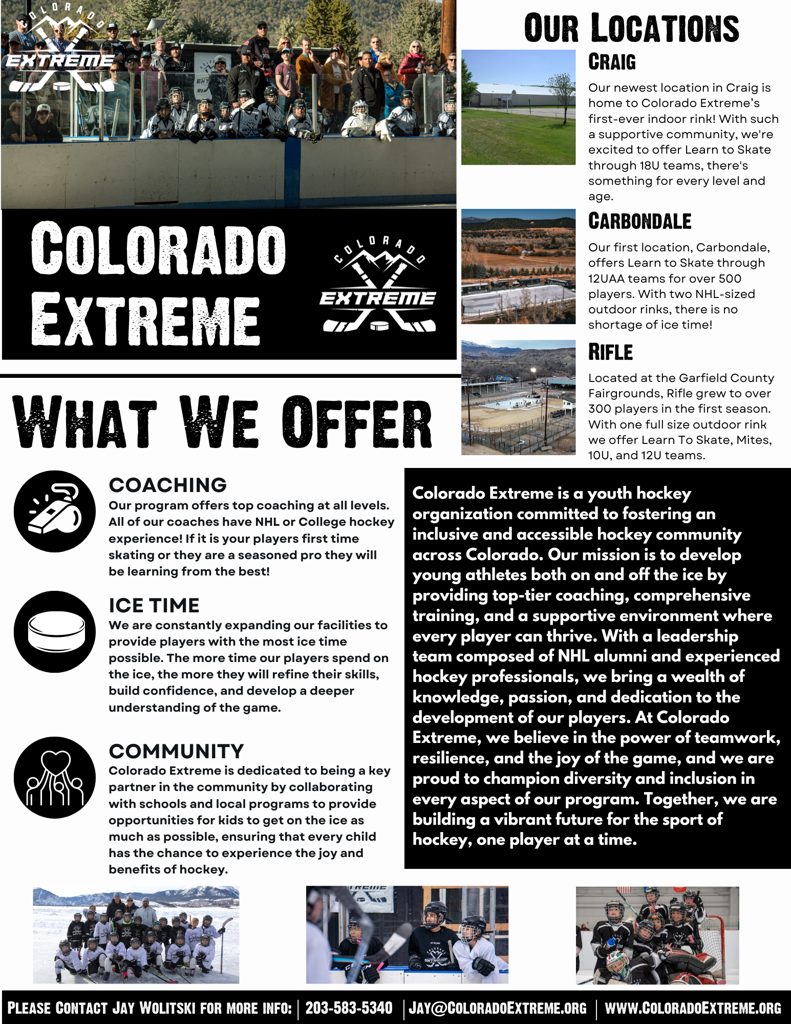Learn To Skate
All are welcomed to Learn to Skate!!! From Never Evers to returning skaters, kids will be broken up into smaller groups based on age and ability to learn from one of our experienced coaches. For skaters who have taken classes before and are able to skate on their own without any hands-on assistance, we will continue to work on advanced skating skills and help students achieve their skating goals whether they are geared towards being a hockey player, figure skater, or just having fun on the ice!
2018 & Younger
The 6U program is normally a player's first introduction to ice hockey, but it is also the natural progression after the Learn to Skate program. Practices follow USA Hockey's American Development Model (ADM) and incorporate small groups in a station-based format.
The 6U program is a development-based program with a focus on skating and skill but with an emphasis on exposing the players to the game; again in a relaxed environment. By developing these skills you increase the athlete's enjoyment and proficiency in the game of hockey.
For the 6U age group, all games are conducted as Cross-Ice (meaning parallel with the blue line), in accordance with the USA Hockey standards for this age group. This small area game focus gives players a greater ability to participate in small area stick handling situations while emphasizing skating edge work.
2016 & 2017
The 8U program is the natural progression after the 6U program. Practices follow USA Hockey's American Development Model (ADM) and incorporate small groups in a station-based format. The 8U program is a development-based program with a focus on skating and skill but with an emphasis on exposing the players to the game; again in a relaxed environment. By developing these skills you increase the athlete's enjoyment and proficiency in the game of hockey.
For the 8U age group, all games are conducted as Half-Ice (meaning from the Goalie crease to the Center Redline ), in accordance with the USA Hockey standards for this age group. This small area game focus gives players a greater ability to participate in small area stick handling situations while emphasizing skating edge work.
2014 & 2015
The 10U program is the period of accelerated learning of coordination and fine motor control and is the critical stage for the acquisition of hockey skills. Prior to the beginning of the growth spurt, players have the best opportunity to learn and begin to master fine motor skills that can be used in combination with other skills. In most cases what is learned or not learned in this stage will have a very significant effect on the level of play that is achieved later on.
Players should be able to begin to transfer skills and concepts from practices to games. Group interaction, team building and social activities should be emphasized. A balance of practices and games will promote the continued development and mastery of key hockey skills.
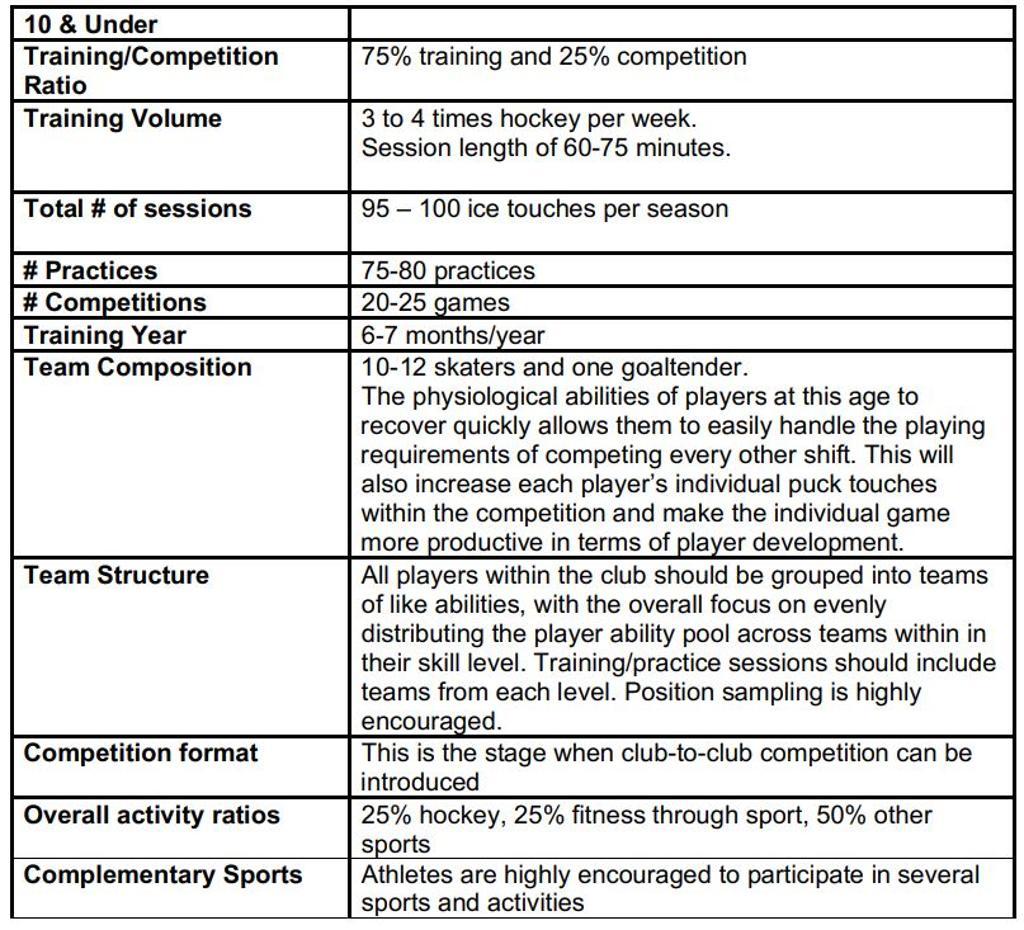
2012 & 2013
Q: What are three things my 12U player should be getting out of the upcoming season?
A: There are a number of important things 12U players should be getting out of this critical stage in their development, but for me, there are three that top the list.
1. Decision making skills (train the brain!)
So what am I talking about here? The 12U classification is a critical stage for helping young players develop the mental part of the game. It’s important to put these players in game-like situations where they are forced to read and react to conflict, spacing, support with the puck and without the puck over and over again so that they can learn through trial and error. We need to allow these players to put the puzzle together themselves, repeatedly, to maximize their potential for long-term success. Too often, people get so consumed with how well a kid skates or how hard their shot is or their ability to handle the puck that they overlook their ability to make good quality hockey decisions under duress. And without that ability, they can’t play the game at a high level. To me, that is the most important part of coaching this age group. The best way to teach it is through lots of small-area games and a proper practice-to-game ratio (at least 2.5 to 1 at 12U) and USA Hockey has developed great coaching materials in terms of small-area games usage in practice.
2. Body-checking/contact in practice
It’s imperative to make a commitment to teaching proper, age-appropriate body-checking and body contact at 12U (regardless of gender) and get players to understand how to effectively give and receive body contact. This should happen every time they show up to the rink.
USA Hockey strongly encourages coaches at this age classification to allow controlled, legal body-checking at various segments during every practice and also to teach the skill of effective body contact and body-checking (on and off the ice) in every practice. It is a skill and it should be taught just like skating, stickhandling, passing and shooting. Unfortunately, it’s a skill too often neglected by coaches. USA Hockey has produced many great resources that coaches can use both on and off the ice to help guide them in this area.
3. Quality performance and execution in practice
Quantity is still important, but an emphasis on quality, proper habits and doing things correctly becomes increasingly important at 12U. It is true that the sheer amount of activity that a young athlete gets is really important, however, as the athlete gets older, it’s even more important that the activity is done properly. Holding players accountable to exhibit good habits and proper technique is not always an easy thing for coaches to do, but it’s imperative, especially as players move into 12U and beyond. It makes no sense to allow players to practice the wrong things, so a focus on quality and good habits at this stage of their development is very important.
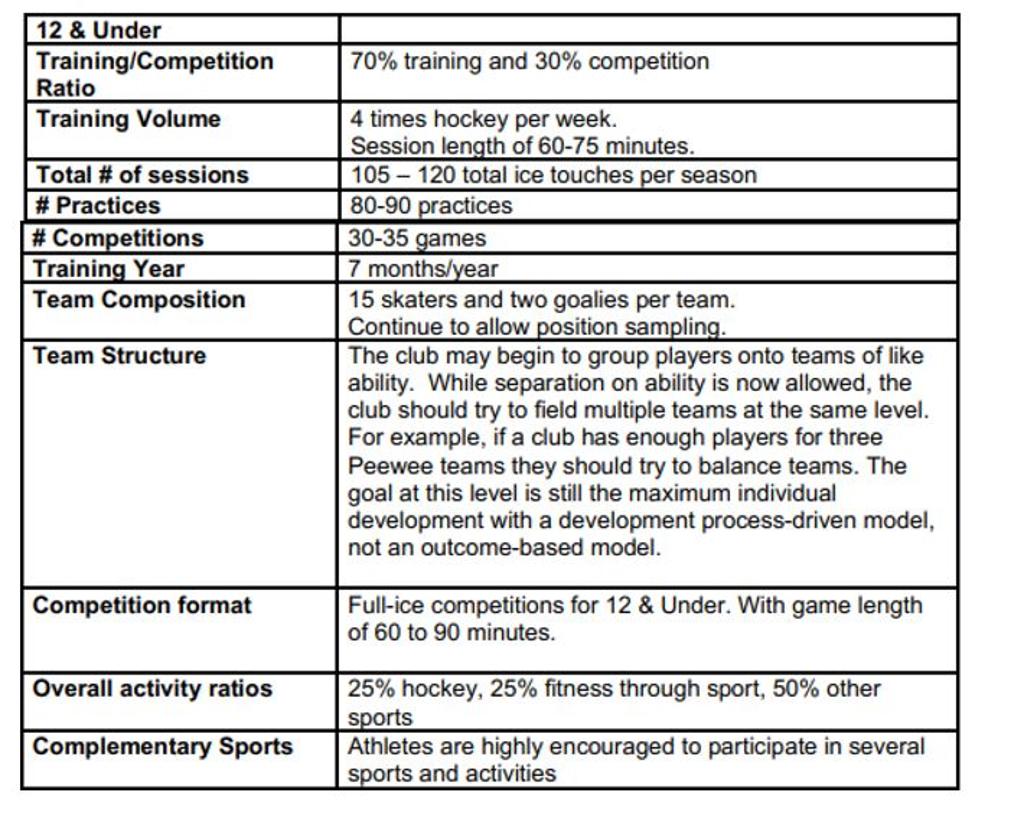
Still have questions?
If you still have questions or are unsure about our programs please feel free to reach out to us!
